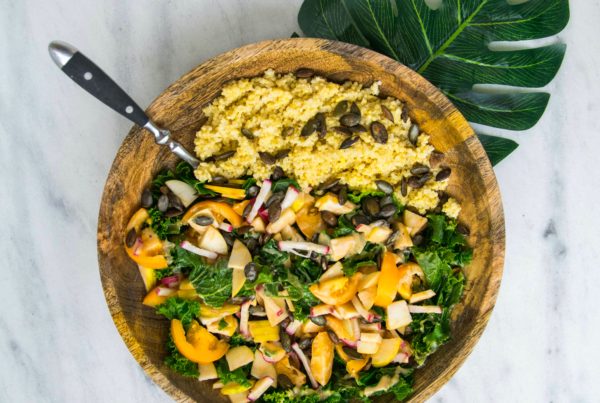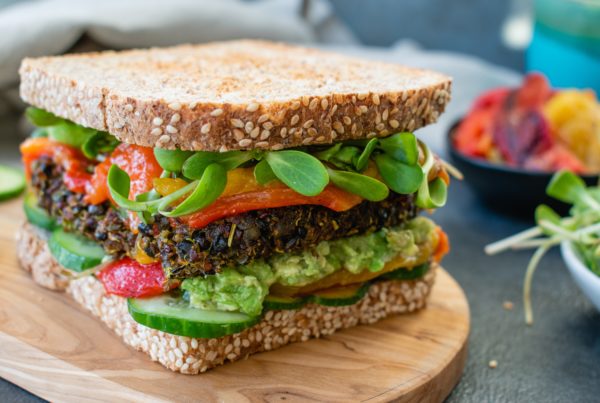Enjoying coffee and reading about the latest discoveries in the field of nutrition is the favorite part of my morning routine. Along with this, I also see news on recent trends in dietary patterns and diets. These days, without any doubt, we have a huge variety of options to choose from. Let’s talk about one of the most important aspects of good health and well-being – food safety. We will lead you through the whole process of attentive food preparation and equip you with the knowledge and skills necessary to handle food safely and consciously at home.
Everything You Need to Know about Food-borne Illnesses and Pathogens
It is estimated that more than 10 percent of Canadians suffer from foodborne infections with more than 200 deaths per year. The vulnerable groups are children aged 5 and younger, older adults, people with a weakened immune system, and pregnant women.
The most common microbes responsible for sickness (number of illnesses per year): Norovirus (1 million), Campylobacter (145,000), Salmonella (88,000), E. coli (12,800), and Listeria (178). The first pathogen belongs to viruses and is transmitted to food from improperly washed and unclean hands. Others are examples of bacteria that usually live and grow in food. For example, Salmonella by nature lives in the chicken intestine and can be spread through its feces. That’s why it is very important to wash eggs and cook them thoroughly.
Parasites such as those found in undercooked meats or raw fish, and Fungi found on the crust of your bread also cause illness and can lead to hospitalization or even death.
The biggest trick that all these pathogens pull on us is growing or producing toxins in our food without changing its appearance – the taste, look, and smell of contaminated food can be absolutely the same as an uncontaminated one! Eggs and bread are great examples of this.
Bacteria’s Favorite Food and Environment
Bacteria as we, humans, love food! The moisture, the more succulent and warmer it is, the better. Thus, moisture, acidity, and temperature are some of the most important factors responsible for bacterial growth.
Although a few bacteria may prefer a simple diet, most of them cannot live without juicy protein-rich foods such as fish, dairy products, meat, and eggs. These foods are also called Higher Risk Foods because of their low acidity. Pathogens are not big fans of acidic foods such as limes or vinegar, so foods like cooked and cut-up raw vegetables and fruits, cheese, milk, seafood, meats, poultry, and eggs are amongst their favorites.

As we mentioned above, bacteria and we are alike. They also do not like cold and heat. Today we know that bacteria die at 74°C and do not grow at 0°C and below. However, they multiply extremely quickly at the temperature range between 4°C and 60°C. This range is called the Danger Zone and keeping your lunch or dinner out of this zone is important. The temperature ranges between 60°C and 74°C and 0°C and 4°C are not considered dangerous as in these conditions most bacteria multiply slowly. However, they are still able to survive in these environments.
Five Tips to Prevent Foodborne Illnesses
1. Shop Consciously
The key to healthy eating is to cook food from fresh and safe ingredients. For that reason, knowing how to choose produce, canned products, meats, eggs, or dairy in a grocery store or farmer’s market and transport them safely home will help protect you from foodborne infections.
- Buy products, whether they are eggs or nuts, from reputable and licensed food businesses.
- While in a grocery store, pick up foods that are not prone to go bad quickly such as grain or pasta first. Then, right before check-out, gather foods that require refrigeration or are frozen.
- As juices from contaminated raw meat and poultry may drip onto your vegetables or fruits, the latter should always be placed on the top of your cart or bag.
- Choose food that is clean, does not have cracks or cuts, and looks appealing. When purchasing packaged food, ensure it is sealed and there are no defects in it, and don’t forget to check all the eggs!
- Always look at the best before and expiration date of the product.
2. Clean Properly
It is also important to ensure that your hands, food, and kitchen are always clean.
- Wash kitchen surfaces and cooking utensils with hot soapy water.
- Wash hands after touching food and after, during, and before cooking for at least 20 seconds.
- Wash all produce under running drinkable water before peeling, cooking, or eating. Don’t wash your vegetables or fruits with soapy water as they are porous and can easily adsorb unwanted chemicals.
- Don’t wash raw meat, poultry, or fish as it can lead to the spreading of pathogens all over your kitchen. Recall that bacteria are afraid of high temperatures and that would be the best way to eliminate them!
- Always wash packaged foods such as canned peas or beans before opening.
3. Safe Food Handling
You should be mindful of three main things every time you prepare your meal: cross-contamination, internal food temperatures, and how to thaw refrigerated products correctly.
Avoid cross-contamination
Cross-contamination is an indirect transmission of pathogens from contaminated food or surface to an uncontaminated one. The most common example is the transfer of bacteria from raw meat to cooked food or ready-to-eat produce. Recall the third point in the Shop Consciously section – here we are trying to avoid cross-contamination! The best practices to prevent this indirect transmission are to never put cooked food in a container from raw meat or fish. Try to use different cutting boards for raw and cooked food.
Cook food thoroughly
As pathogens can be killed only at 74°C and higher, it is important to ensure that the internal temperature of your thanksgiving turkey has reached the required limit. For most protein-rich foods it is 74°C but in order to cook the whole turkey, its internal temperature should reach 82°C. That being said, having a digital food thermometer in your kitchen is essential for your health. We encourage you to stay curious and look at the correct internal temperatures of each high-risk food here.
Thaw frozen products the right way
Never leave the frozen food under room temperature to thaw. Such practice will put it in the danger zone and promote rapid bacteria growth. The safest way to defrost frozen meats or seafood will be to place them in the fridge, microwave oven, or in cold water.
4. Proper Chilling and Heating for Cooked Food
According to the health authorities and food safety experts, failure to cool and heat up your cooked food properly is one of the most common causes of foodborne infections.
Chill hot foods quickly
Placing a pot with hot soup into cold water with ice before refrigerating will help to cool it rapidly and will reduce the time it will spend in the danger zone. The rule is to cool hot food from 60°C to 20°C for not more than 2 hours, and from 20°C to 4°C within 4 hours. I would also recommend separating hot cooked food into small containers as it will help to chill them quicker. Remember that putting hot pots with food in the fridge will decrease its inside temperature and might place your food in the danger zone for more than 2 hours.
Heat up to the right temperature
A safe way to heat up food is to do it rapidly and ensure that it has reached 74°C or above. If you are not going to serve the food right away, hold it at a minimum of 60°C until eaten.
5. Store Safely
Be careful not to leave high-risk foods in the danger zone for longer than 2 hours at room temperature and more than 1 hour if it is more than 32°C. Bacteria multiply very rapidly, and even under room conditions, there might be millions of “uninvited guests” in 2 hours.
Be careful not to leave high-risk foods in the danger zone for longer than 2 hours at room temperature and more than 1 hour if it is more than 32°C. Bacteria multiply very rapidly, and even under room conditions, there might be millions of “uninvited guests” in 2 hours.
Here are additional things to consider:
- The safest temperature to store food is 4°C or lower in the refrigerator and -18°C or lower in the freezer. We also recommend checking the temperature in your fridge periodically using a digital thermometer to make sure your fridge is working properly.
- Separate cooked foods from the raw meats in the fridge the same way you do in your cart while shopping. No raw meat juices should reach other foods!
- Remember that the refrigerator can have different temperatures depending on the place. We would not advise storing high-risk foods in the refrigerator door (yes, eggs included!)
- Make sure to store eggs, cut up produce, or open cans in the refrigerator.
- If you find any signs of mold in your fruits, vegetables, or bread, throw it immediately. We know that it sounds wasteful and frustrating, but toxins produced by mold can remain deep inside the food
Reviewed by Annie Tsang, RD



